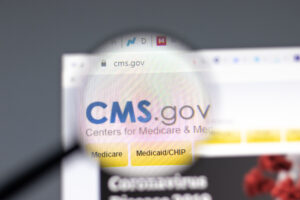Physicians are well aware of the impact created by social determinants of health (SDOH) and want to address these needs, as indicated in a recent survey. But many believe they can’t help their patients, due to:
- Limited time to discuss SDOH during patient visits
- Insufficient staff to direct patients to the appropriate resources
- Existing payer requirements that take time
- Lack of reimbursement for screening for SDOH
- Unavailable, inadequate or difficult-to-access resources
The good news is that as the focus on SDOH grows, more resources than ever are available to help physicians, from community resources to health plan-sponsored programs to time-saving solutions.
Primary care physicians (PCPs) can take advantage of multiple resources from their health plans. In particular, Medicare Advantage plans are rapidly transitioning to value-based care, at the direction of CMS. As CMS moves to pay for quality rather quantity, the depth and breadth of payer-sponsored programs grows.
SDOH programs show measurable improvements
Anthem, for example, offers the Members Connect program to its Medicare Advantage members. The program addresses social isolation and loneliness to improve members’ overall health. It connects members to a community health worker who helps them find specific community resources they need. Volunteers act as social care partners or “phone pals” who call members weekly to check on them and provide a social connection.
The program gets accolades from members: 74 percent said they increased engagement in their health. Anthem’s claims data shows that participants reduced hospital admissions by 8 percent and ER visits by 43 percent.
Superior HealthPlan, based in Texas, offers a multitude of programs: housing assistance, an in-house network of community health workers to guide members, and a unique program that helps provide funding for hygiene closets. The plan partners with community organizations across the state to offer these hygiene closets with products needed to maintain a healthy, active life. At nearly all of the hygiene closets, specific dates are designated as “Superior Days,” where plan representatives join with other community partners to host events and provide direct resources for those who need them.
To learn about programs available to their patients, physicians and office managers can contact their health plans’ provider representatives or quality teams.
Time-saving solutions
Lack of time and insufficient staff to address SDOH were cited by survey respondents as well. Here, too, PCPs can look to their health plans. With the transition to value-based care, plans offer resources such as care managers who support patients with SDOH-related needs. PCPs should be aware of which health plans offer these services and refer patients for additional support.
Note that ICD-10-CM Z codes are available to report patients’ SDOH but are generally underutilized by PCPs. When PCPs use these codes to report SDOH, that information is passed to health plans through claims. Plans can use that information to enroll patients into their various SDOH programs, alleviating the burden for PCPs.
Likewise, as plans ask PCPs to document and code Medicare Advantage patients’ health status for accurate risk adjustment, they may offer additional resources to assist patients with identified needs. A number of national and regional plans partner with outside resources, such as Vatica Health. Vatica offers a PCP-centric risk adjustment and quality of care solution, which combines technology and clinical consultants at no cost to the practice. These specially trained clinicians serve as an extension of the practice. They review and curate all relevant health plan and EMR data. This information is used to create a pre-visit notification to help the PCP efficiently perform the visit, document patients’ health status and assist with care gap closure.
Vatica’s time-saving solution enables PCPs to increase use of preventive services and improve patient satisfaction with Vatica’s combination of technology and clinical support teams. When patients’ conditions are accurately reported to health plans, that ensures adequate financial resources are available through CMS. This can also result in the patient receiving additional services from the health plan to address chronic care needs, complex conditions and SDOH.
More resources benefit PCPs and patients
SDOH continues to get more visibility, and rightfully so. This is good news for PCPs. More resources from health plans, government-funded programs and community organizations can help PCPs address SDOH. Outcomes include healthier, more satisfied patients and easy-to-access resources that can help to address lack of clinical staffing and staff burnout.











